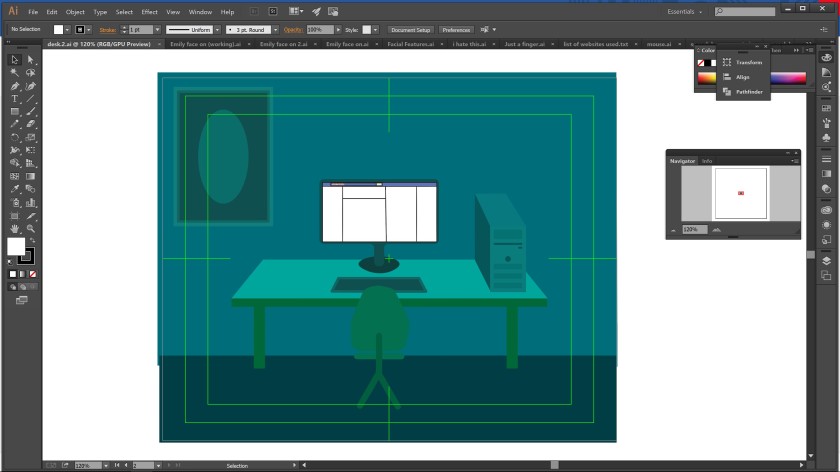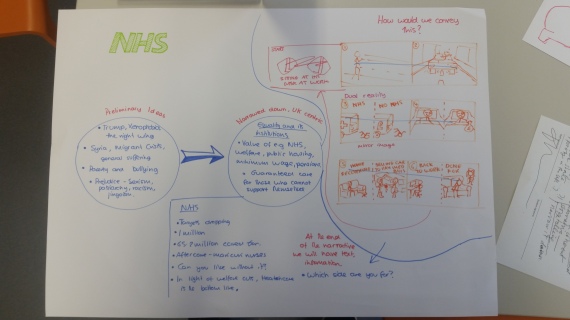For the first project in my persuasion module I have been tasked with creating a campaign on a topic chosen by myself from a list. I chose to focus on health.
Originally I had hoped to do a campaign focusing on voluntary euthanasia. I explained in a previous blog post, my reasons for initially choosing this topic and for rejecting it after further research. I have now decided to focus on fitness and well-being. I decided to do my work under the banner of Change4Life. A government organisation run through the NHS in order to educate and encourage families to adopt healthier life choices in terms of diet and exercise.
My focus, while on the entire family unit, is specifically primary aged children. My reasoning behind the is that much of a child’s diet and exercise habits and choices are determined by the lifestyle of their parents.
The app concept is one that would allow a child to care for a pet avatar. The avatar would represent a pet that would need walking and caring for. The completion of tasks such as going to the park or taking a certain number of steps a day, would generate rewards which would allow the user to build their avatar in certain ways, such as increasing its abilities and buying unique items for them.
My research has been quite extensive, this has allowed me to target my audience very closely. My idea is that young children will need supervision to accomplish the tasks set out for them in order to earn rewards and many will need a parent to download the free app. This will encourage all parties to get out and be more active.
Initially I intended to create a tamagochi type device which would be cheaply purchased and allow the child to have control of the avatar entirely independently. But it became clear that this would create a financial barrier to entry for the programme. Of course, a phone is still required, but according to www.statista.com that should be less of an issue.

Creating the app is one thing. But I had to build an entire design language that would be appropriate for the audience and work in multiple contexts. I elected to use a series of arcade style icon in bright, block colors and to begin by creating a number of posters.
I decided to make my posters as minimalist as possible in order to hold children’s attention. Too much information may be off-putting. Each poster contains an icon of an item that can be earned or collected in the game and each bestows its unique benefits. I wanted to make the experience of this game one of development and positive reinforcement.
This idea is partially inspired by the game Pokemon Go, where a player uses their phone’s GPS and camera to find Pokemon to capture as well as various rewards, in a similar vein to geocaching. This may seem strange as Pokemon go went from a sensation to a distant memory in a matter of months. I believe this is due to its lack of reward for persistence and its lack of variety and development as you play. This Role Playing format is very popular, for example:
- Club Penguin was a massively multiplayer online game (MMO), involving a virtual world that contained a range of online games and activities. It was created by New Horizon Interactive (now known as Disney Canada Inc.). Players used cartoon penguin-avatars and played in a winter-set virtual world. Club Penguin was made available to the general public on October 24, 2005, and expanded into a large online community, such that by late 2007, it was claimed Club Penguin had over 30 million user accounts.[2] As of July 2013, Club Penguin had over 200 million registered user accounts
- World of Warcraft (WoW) is a massively multiplayer online role-playing game (MMORPG) released in 2004 by Blizzard Entertainment. With a peak of 12 million subscriptions in October 2010 and Blizzard’s final report of 5.5 million subscriptions in October 2015, World of Warcraft remains the world’s most-subscribed MMORPG, and holds the Guinness World Record for the most popular MMORPG by subscribers. In January 2014, Blizzard announced that more than 100 million accounts had been created over the game’s lifetime.
I believe there are a number of reasons for the success of these games. One was the community network aspect. Players had a huge number of fellows and could play and compete against strangers. There is also the aspect of character development. Both game featured a standard unadorned avatar as the starting character which could be improved and personalised, giving the player a feeling of accomplishment.
I plan for this app to incorporate both of these elements. The avatar will be a dog, a number could be chosen, their names as well as their fur patterns could be chosen by the player. They would then work towards training their pet and purchasing items for it. They would also have other features such as the ability to compare their achievements with other players on local or even national leader boards. I would also have daily or weekly challenges that would vary from week to week, keeping the game from becoming too repetitive.
I designed this graphic to illustrate my idea.

As you can see, the app would be entirely self contained, requiring nothing but a mobile phone. I decided that since the purpose of the app is to encourage healthy life changes, there should be local events page that would allow users to advertise for activities and events. These could be a chat function allowing members to communicate within groups to organise various events.
My Thoughts
I do have my concerns that I am focusing too much on the functionality of the application rather than the design language it would employ. The two are so intertwined and so, what might work on a printed page, may not translate all that well into a an app on a small phone screen.
I will continue to advance and refine this idea as I have found inspiration for additions and features comes faster than I can implement it.











































